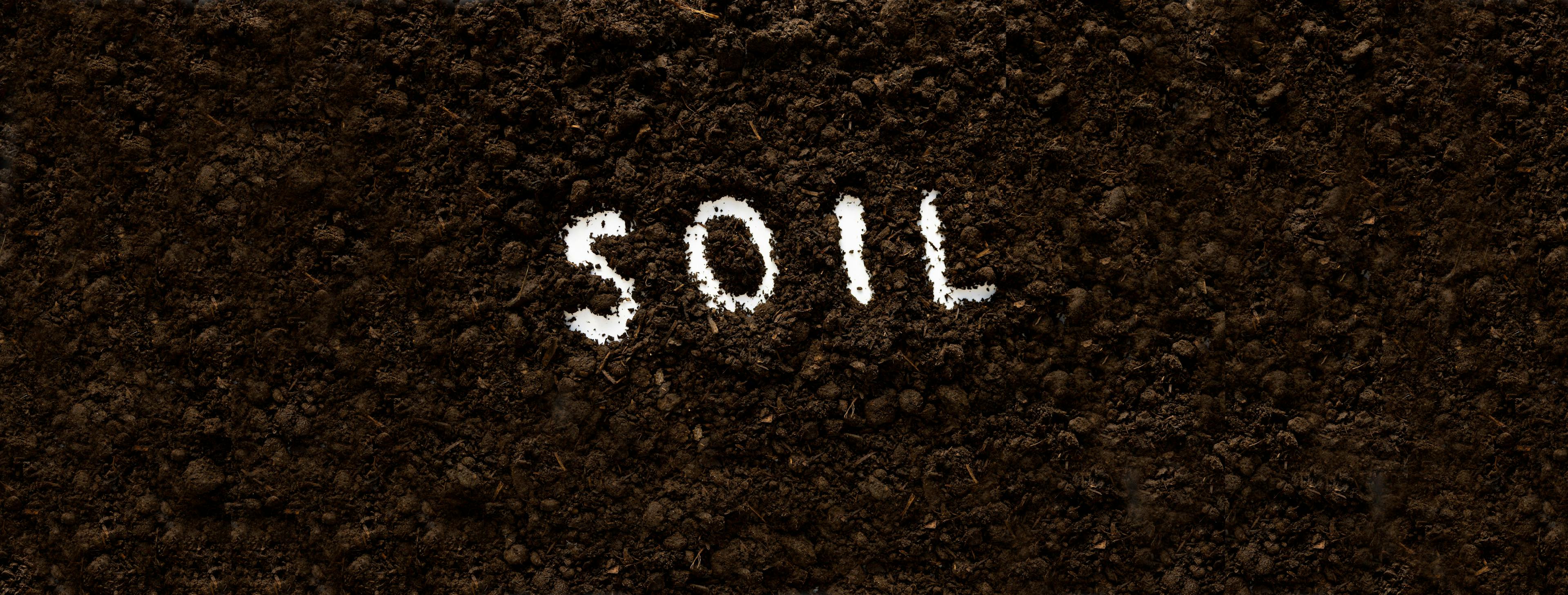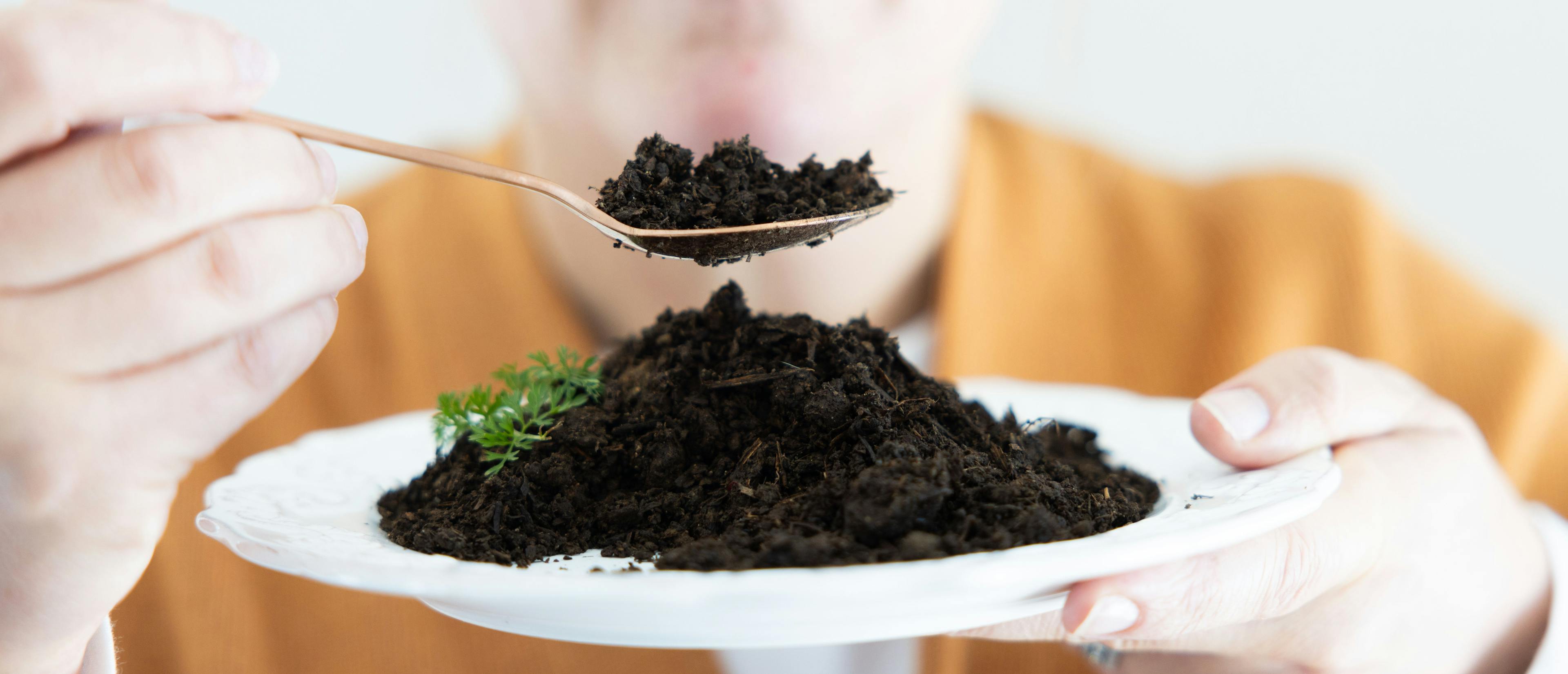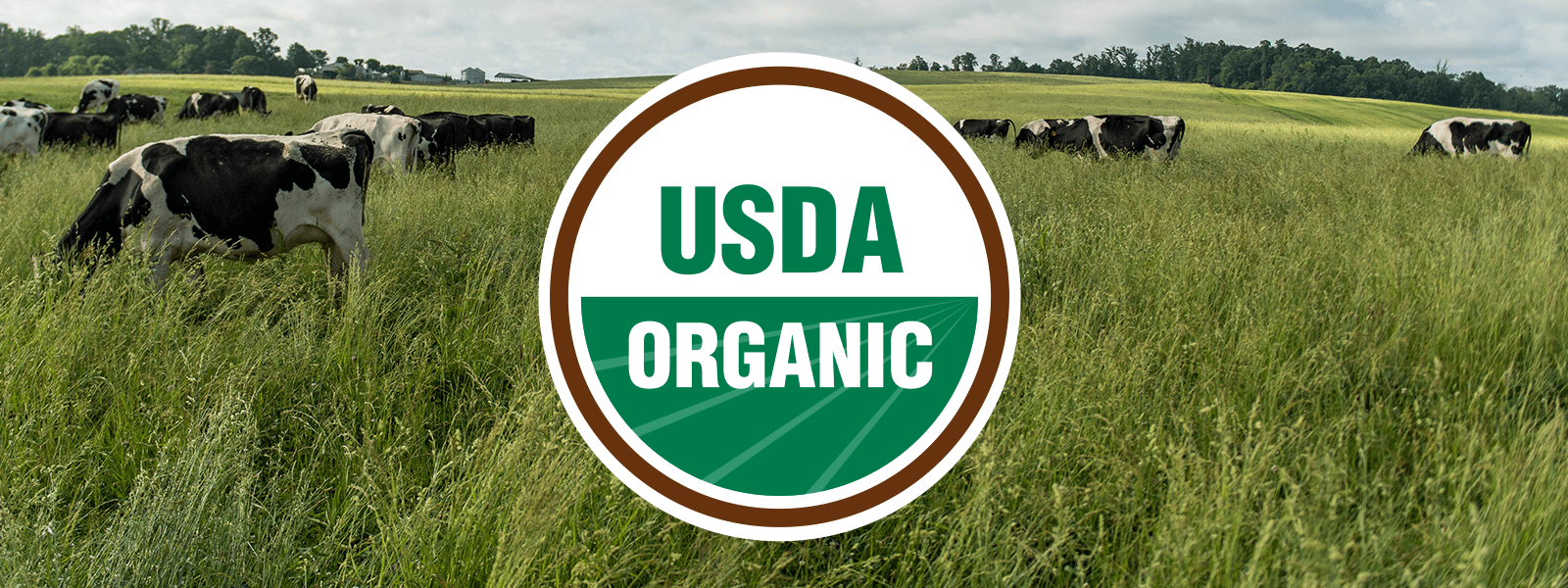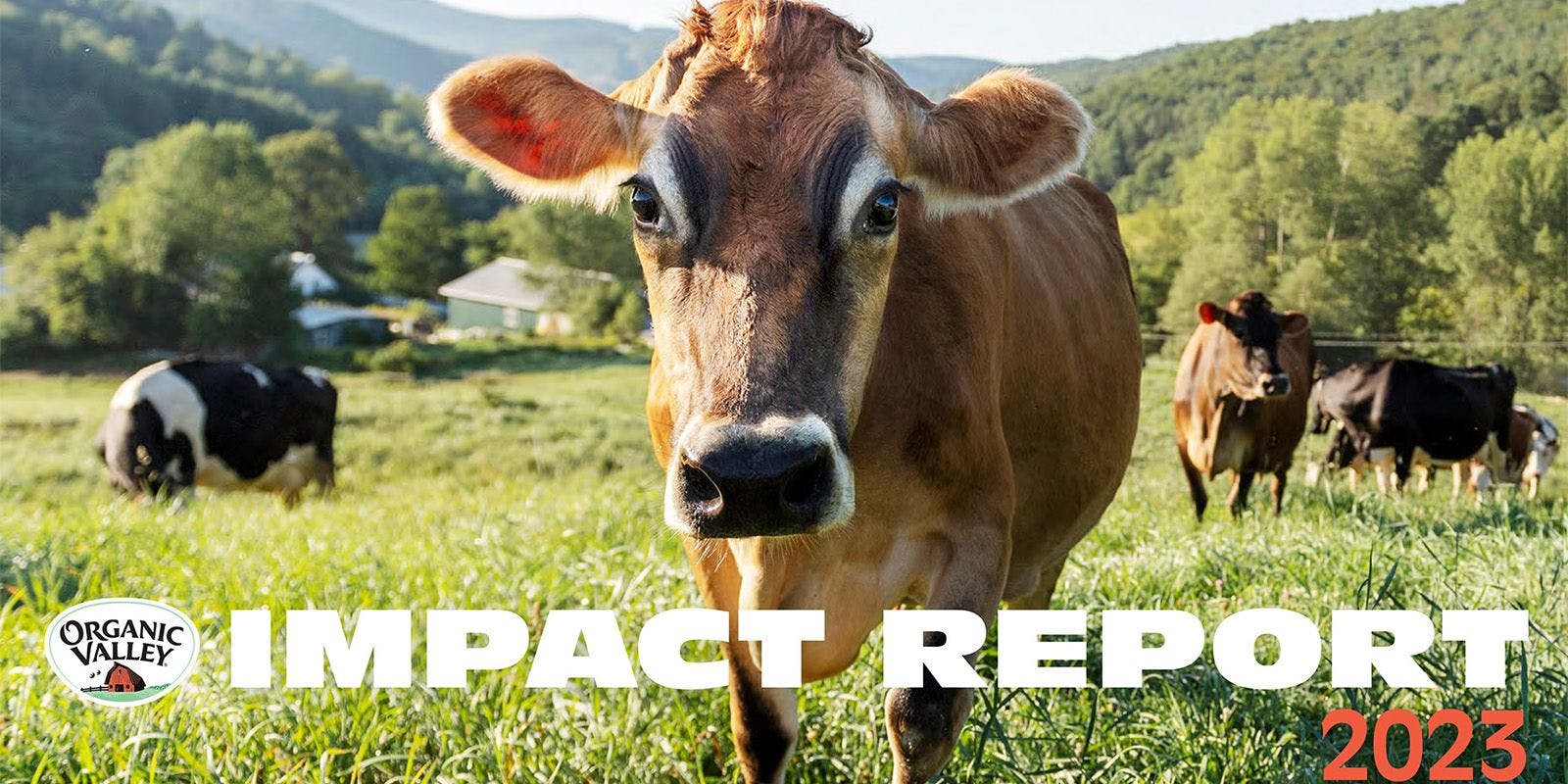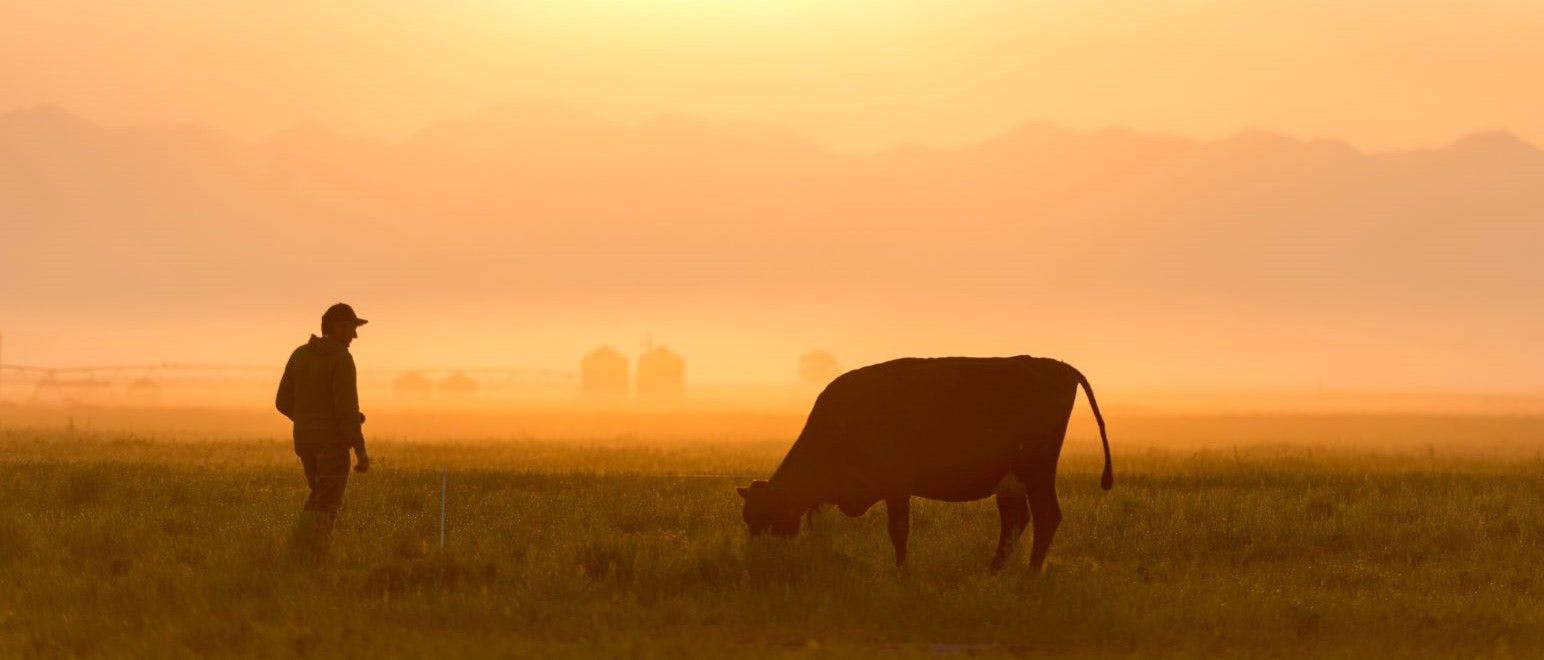
Earth
Superheroes of Soil: Protecting Life Below (and Above) Ground
Is soil just dirt, or is it something deeper? When we asked organic farmers in our cooperative about soil, it became clear that soil and dirt are very different things. There is life in the soil below our feet, especially below the hooves of cows on pasture. That soil life is crucial for the health of our entire world.
Soil health impacts the quality of the food you eat, the air you breathe, the plants you see and the paths you walk. A special group of protectors works year-round to nurture the life in soil and maintain its health. The more than 1,600 farmers in our cooperative are among these protectors.
Let’s dive into why soil is so important and why it needs protection.
What Is Soil vs. Dirt?
Soil is a vibrant collection of life that might just be one of the rarest things in the universe. That might sound extreme but take this on for size: A quarter-teaspoon of soil can contain a billion microorganisms, along with several larger life forms and plant matter that breaks down and turns into nutrient-rich soil.
Dirt is another story. You can find it pretty much everywhere, either in your yard or buried under your parking spot. It doesn’t have a whole lot that makes it special.
Good soil isn’t like the dusty dirt of a barren wasteland. Good soil has a distinctive, crumbly texture and is abundant in organic matter, a quality many gardeners eagerly seek. However, the true measure of soil's quality lies in its health, which is intricately linked to the diverse interactions between plant life and soil microorganisms.
This unseen ecosystem includes bacteria, fungi, nematodes and protozoa. According to the Food and Agriculture Organization of the United Nations, soil-dwelling organisms constitute about a quarter of all biodiversity on our planet.
So far, microorganisms and life like this are only found on Earth, so might it be time to protect it? Recognizing the richness of life within soil, our Organic Valley farmers take a role in nurturing and protecting this vital resource.
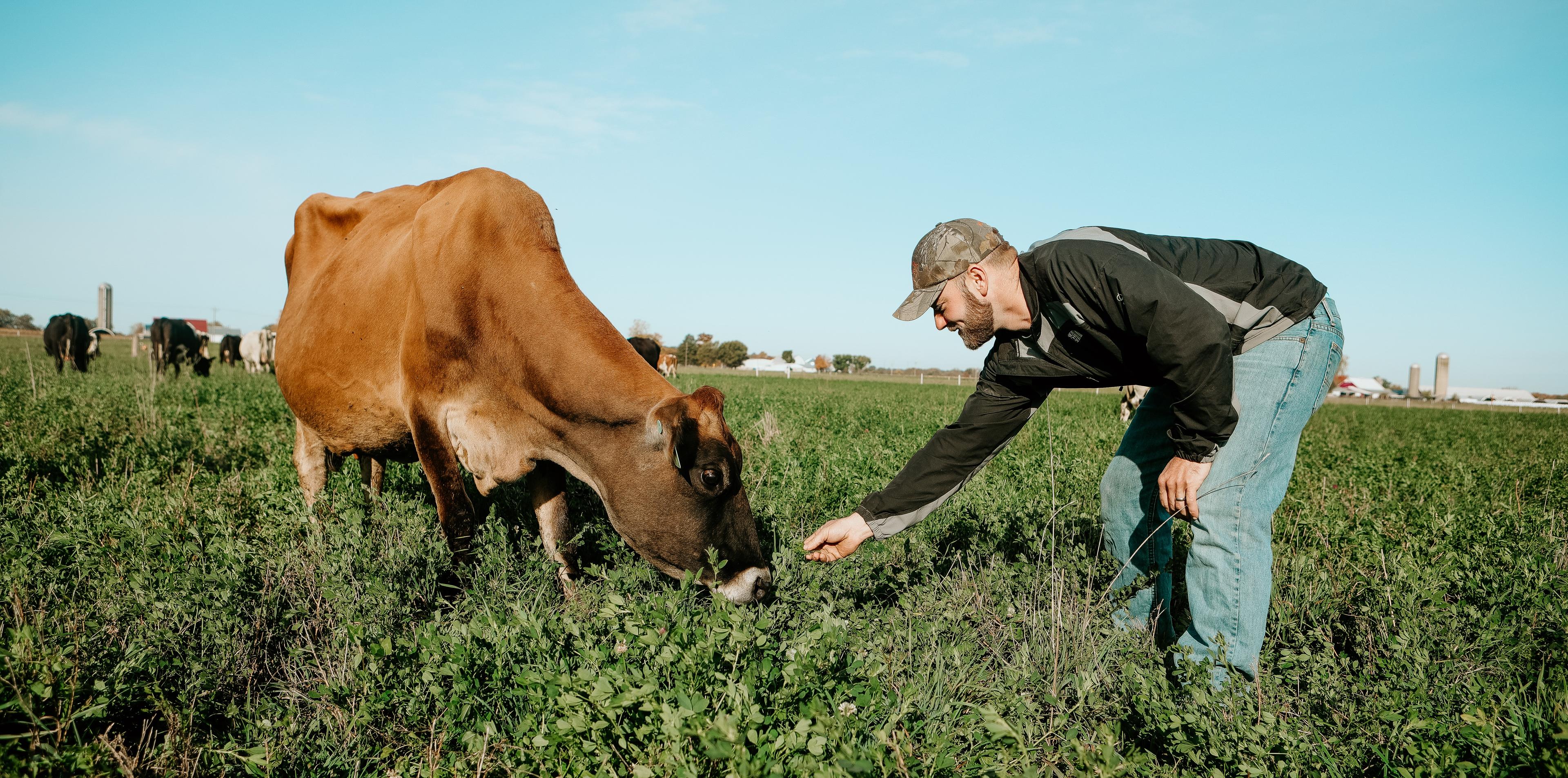
Jordan Settlage is shown at his organic farm in Ohio.
Protectors of Soil and Earth
Cows are gentle giants that can transform barren lands into productive ecosystems — with incredible results. As our farmers have talked about on YouTube, cows do more than simply eat grass. Their interaction with the soil is an essential part of a natural cycle, where each step enriches and revitalizes the land. Their dung is full of nutrients that encourage grasses and wildflowers to sprout, helping pastures grow back.
Cow manure is naturally “distributed” in the pastures, where it dries into patties and breaks down quickly and naturally, fertilizing the soil while emitting less methane or other greenhouse gases than anaerobic methods, like manure pits.
This process is part of a natural rhythm that enriches the soil and promotes a healthy ecological balance.
Organic Valley farmers raise the cows that continue that circle of life, and these same farmers stand at the forefront of the fight to nurture soil life. Many of these organic farmers complete soil health plans annually.
So how do farmers protect soil life?
Well, for one, grass. Yes, grass is common, too, and a great protector of soil. You may spend hours (even days) in the yard keeping your grass lush and green. Organic Valley farmers work hard to keep the grass green and lush, too — but it's not the same grass you will find in yards and streetscapes across the country. It is a mix of plants like clover, rye, alfalfa, orchard grass and other hardy perennials.
“Grass is the great healer for soil. If you apply compost or manure to your land, the grass will hold it there,” said Organic Valley farmer Jeff Miller, Ohio. “When I am done farming here, I want it to be a healthier ecosystem than when I got here.”
So that’s a major way organic farmers protect soil: by growing pasture grasses that keep soil covered, reducing erosion and helping compost and manure integrate into the soil.
Wind and rain can cause erosion that washes microbes and minerals into streams and off the fields. Organic dairy farms that move cows from pasture to pasture, otherwise known as rotational grazing, reap the benefits of grass that helps hold manure or compost until it can break down and breathe more life into the soil. By regularly providing fresh pasture, our farmers are allowing grasses and soil time to heal.
Learn more about pasture management: A Perfect Pairing of Cows and Pasture.
“We don’t lose soil through erosion because of the grass,” Organic Valley farmer Tucker Gretebeck said. “The roots in the soil are like magic for holding everything together.”
In addition to grass, Organic Valley farmers employ other innovative practices to enrich soil health. These include crop diversity, using conservation tillage to decrease soil disturbances and using natural fertilizers to keep chemicals off the land.
Organic Valley farmers have kept more than 540 million pounds of toxic chemicals off the earth over the last 35-plus years. By embracing these methods, farmers ensure soil retains its vitality, contributing to a sustainable food system and a healthier environment. The efforts of our farmers in soil preservation are crucial, especially when we consider the widespread issue of soil erosion and its implications.

Spreading manure at the Miller family farm, Ohio
What Happens When Soil has No Protector?
When land is bare of grass or cover crops, what happens? Isn’t soil always around?
The unfortunate answer is no.
Every 5 seconds, the world loses one soccer field's worth of soil to erosion — the soil we all rely on to have tables full of delicious food. And there isn’t much of that soil left. The Food and Agriculture Organization of the United Nations revealed that 90% of the Earth’s topsoil will be at risk by 2050.
Soil erosion, a significant concern affecting many areas of the U.S., affects soil health and productivity. It happens because of water erosion, wind erosion and erosion along bodies of water or steep hillsides. Organic farmers combat these challenges through techniques like crop rotations, cover crops and adopting soil health management systems. These mitigate soil loss, maintain soil fertility and help with water management. Healthy soils retain more water than your common, run-of-the-mill parking lot dirt.
Where the life in the soil is not protected, soil dies and blows in the wind — sometimes literally.
Organic Valley farmer Jordan Settlage gave his perspective on protecting soil and other natural resources.
"We believe that we need to have healthy soils and healthy plants. By having healthy soils and healthy plants, we will in turn have healthy animals and improved food quality," the Ohio farmer said. “This holistic view links soil health directly to the overall health of the ecosystem and its biodiversity.”
Miller echoes this sentiment, emphasizing the regenerative power of grass on soil and his commitment to leaving the land healthier than he found it, contributing to carbon sequestration and combating climate change.
The United States Geological Survey defines carbon sequestration as the process of capturing and storing atmospheric carbon dioxide. It is one method of reducing the amount of carbon dioxide in the atmosphere with the goal of reducing global climate change.
This scenario highlights a critical issue: Soil degradation doesn't just affect farm productivity; it has broader implications for food security and ecological balance. The farmers at Organic Valley understand this and actively work to reverse this trend demonstrating that with careful stewardship, degraded soils can be revived and revitalized.

Tucker Gretebeck walks an area impacted by flooding on his Wisconsin farm.
Erosion and Water Management
Gretebeck has seen the extent of the erosion and lack of soil health first-hand on his Wisconsin farm. Gretebeck and his wife Becky raise cows on grass to produce Grassmilk® for Organic Valley. They saw their pumpkin patch and 100-year-old barn swept away in floodwaters. Floods had happened before, but as neighboring properties went without cover crops, grass or healthy soil, the water runoff became so intense that a local dam broke, destroying decades of work.
Instead of throwing in the towel, Gretebeck rolled up his sleeves and got to work. Uniting with other farmers and landowners in the region, Tucker joined a local watershed council, quickly becoming the vice president of the organization.
In 2023, Tucker held a gathering of local conservationists and community members to bring the issue of flooding and erosion to the forefront, with strategies of how to help “water walk instead of run” by increasing, of all things, soil health.
The conservation council is encouraging strategies like planting cover crops to avoid bare soil in the watershed, planting trees to create silvopastures, establishing water gardens and installing permeable surfaces that enhance ground absorption and minimize runoff.
Organic Valley farmer Matthew Canter, Wisconsin, also joined in on the project. He said they put a lot of effort into making pastures robust, full of perennials and diverse.
“As a result, you are creating sod layers which hold in more water. Water is really what we are all about here in the watershed because it’s both a blessing, and if it’s misused, it can be a catastrophic curse,” he said.
All of these projects, this gathering of farmers and community members, are what is needed to restore the soil and protect where your food comes from. The experiences of farmers like Gretebeck, highlight the urgency and importance of these protective efforts.
Inspired by such challenges and resilience, let's explore how our organic farming practices contribute to soil health and fertility
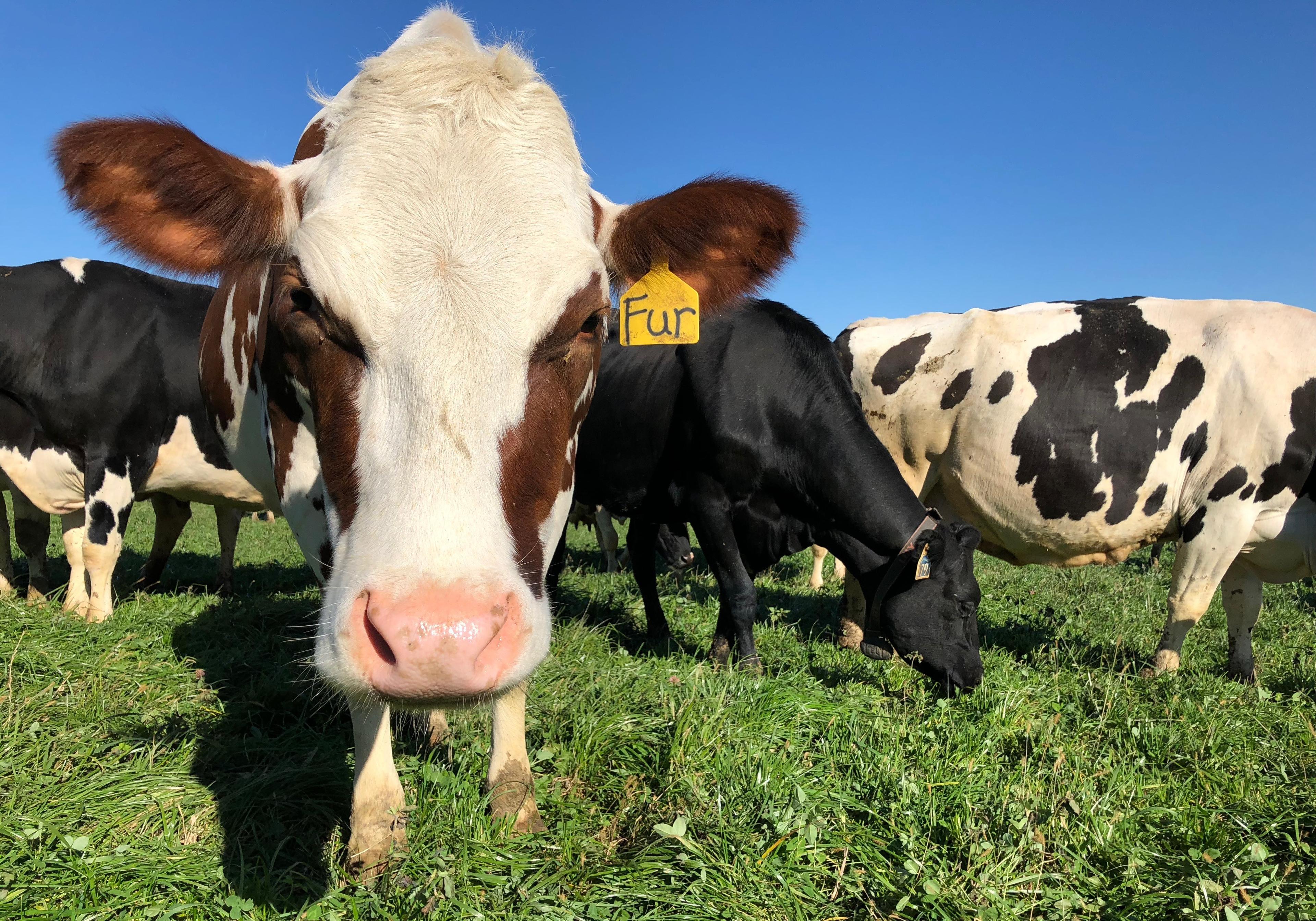
Buck Hill Organic Dairy, Minnesota
Organic Farming and Soil Fertility
After Organic Valley farmers Ruth and Dennis Buck transitioned their Minnesota farm to organic, they began to see changes in soil, biodiversity and crops.
“What will save us is our soil,” Ruth said.
Soil is teeming with life and earthworms are an important contributor to healthy soil. Their little paths let air and water into the soil. And once the earthworms start doing their thing and the soil starts to get healthy, other organisms and beneficial creatures start to appear, like toads. Toads like loose soil and are eager to eat unwanted pests. You will find a lot of toads at the Buck farm!
“This land is here forever, and we need to leave it better than we got it,” Ruth said.
In addition to these farming techniques, there's another powerful tool for soil restoration that anyone can participate in: composting.
Composting to Restore Soil
One way to rapidly restore soil and even help sequester carbon under the soil is to compost. Anyone can take part in composting as an at-home conservation project. If you are interested, we recommend this easy-to-read article from our friends at NPR. Composting can be as small of a project as taking part in compost collection in your community, to a complex but rewarding project like the ones on many Organic Valley family farms.
Gretebeck has a new compost project on his farm — the first farm enrolled in Organic Valley’s new carbon insetting project.
Implementing eco-friendly composting practices has cut down the amount of manure and expired bedding Gretebeck must haul to his fields by two-thirds. He doesn't use nearly as much fuel to transport the compost, it benefits the soil and it saves time.
By spreading compost, the Wisconsin farmer is adding organic matter to the soil.
"The whole basis of what we do starts with soil ― healthy soil," he said. "Healthy soil makes healthy plants. Healthy plants provide micronutrients that lead to healthy cows. Healthy cows produce the most high-quality, nutrient-dense, delicious milk you can buy."
Gretebeck and Organic Valley compost and cropland specialist Zach Biermann worked on the project.
“We composted the manure into a nutrient-rich soil amendment that doesn't break down any further, so it's a stable source of carbon,” Biermann said. "We took a lot and made it a little. A little is all you need.”
Not only is this practice adding organic matter to the soil, it helps ensure that manure doesn’t run off the soil. An added benefit, it doesn’t smell like, well, manure. While most people are losing soil, Gretebeck is gaining it.
Numerous Organic Valley farmers are composting and many others are looking into it. Sometimes it’s hard to step back from doing things the way they’ve always been done, Biermann said. Shifting views is good for everyone, including the earth, consumers and the soil.
“Composting is a beneficial practice in this climate crisis we are all trying to farm in,” he said.
The efforts in composting and organic farming extend beyond the fields, playing a crucial role in the health of our soil and, ultimately, our planet.

The Turner farm, Maine
Healthy Soil, Healthy Planet
The health of our planet and well-being are deeply connected to the health of our soil. Organic farmers, through their sustainable practices, lead the effort in protecting and enhancing soil health, contributing to sustainability and biodiversity.
As consumers, we can contribute to this cause by supporting organic products and practicing at-home soil conservation and water management. Together, we can ensure the longevity and vitality of the very ground that sustains us, advancing our fight against climate change and ensuring high food quality.
Dairy, done right, can be part of the climate solution and not the climate crisis.
Joshua Fairfield is the cooperative public relations manager at Organic Valley, but in his spare time dreams of creating an organic farm built from the ground up to increase biodiversity and protect life. He enjoys good books read by firelight, trying new (and old) gardening techniques and writing about the natural, beautiful systems on organic farms.
Related Articles
- Tags:
- land stewardship & conservation,
- soil health & science














